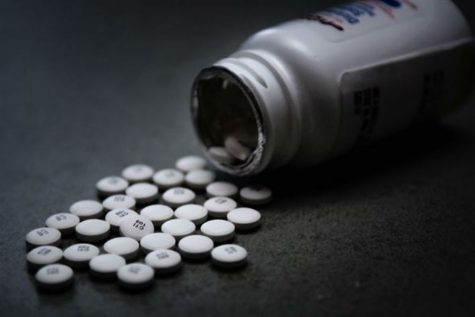Westford officials tackle opioid epidemic with education
September 30, 2017

With overdose deaths on the rise in Westford, residents are beginning to realize the scale of the drug problem in this town. However, the Westford Police and Fire Department has been on the lookout since drug usage started going up regionally years ago, and are now taking action to get to the root of opioid addiction.
Three Westford residents have died from drug overdoses in 2017, the same number as in 2016, despite there still being three months left in the year. Health Department Director Jeff Stephens and Substance Abuse Prevention Coordinator Ray Peachey explain that people are often surprised to discover the magnitude of the opioid epidemic’s impact in Westford.
Although it is difficult to know where the drug problem in Westford specifically is coming from, Stephens and Peachey say it is important to emphasize education at the student level in order to stop the problem before it starts.
“It’s really hard to say where it came from. We do know that it’s a problem that’s growing week to week, day to day […] that’s really our struggle: what is causing people to go down this road?” Stephens said.
“It’s going to be hard to stop this, but we need to stop it at a younger age,” Peachey added.
Dependency aside, long-term usage of opioids can lead consequences such as liver or brain damage. Once addicted, opioid overdoses cause slowed breathing and organ function, and the lack of oxygen to the brain can be fatal.
Opioid addiction comes in part from prescribed medication, when an individual has a hard time weaning off pain medication and instead becomes addicted. A common example of this is high school athletes who become addicted to pain medications such as Oxycontin after a sports injury.
Otherwise, prescribed medication can be intentionally distributed or used by someone for whom it was not prescribed. Stephens and Peachey support a decrease in pain medication prescription as well as smaller supply amounts for some types of pain.
However, simply cracking down on access from prescribed medications will not solve the problem, as there are always illegal ways of obtaining them. Peachey and Stephens agree that drug usage, especially among younger ages, stems from a lack of education and communication. Students may not be aware of the consequences of drug usage, and parents are often in the dark that their children are breaking the law.
As such, Peachey advocates helping parents raise awareness and ask questions of their child. Although high schools have implemented various programs to educate students about drug addiction, he feels that the same push should be occurring at home.
“[Family education] is not done as much as it should be. Everything now is ‘the school should do it, the school should do it […] Stuff like this needs to be taught or reinforced at home. I like the idea of educating the parents — that way they’re aware. The parents are the last ones to know that kids are doing something wrong. […] It’s the parent’s house, it’s not the kid’s house, you know?” he said.
Stephens also points at school curriculum changes that may help stop students from using drugs. He teases out the possibility of negative reinforcement, acknowledging that it would be effective in catching the attention of students who might not otherwise take educators seriously.
“There’s a couple ways, none of which may be good or bad. There used to be an old show called Scared Straight […] It was a pretty graphic show about how kids were gonna be treated in prison. I don’t know if that negative reinforcement is the right way to go, but there are people who need to see: this is what’s going to happen if you do this,” he said.
Opioid addiction is, ultimately, often an emotional problem at the core. Stephens understands that the pressure put on individuals to continually work under physical or emotional duress is often what causes them to succumb to addiction.
“The pressure needs to be taken off people to perform or excel at a high level all the time. If you’re hurt, you need to be allowed to recover. That could be mentally, emotionally, and physically, it’s not necessarily a sports injury,” he said.






